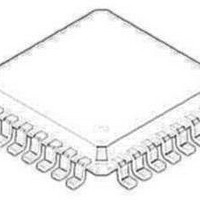NCP5331FTR2G ON Semiconductor, NCP5331FTR2G Datasheet - Page 30

NCP5331FTR2G
Manufacturer Part Number
NCP5331FTR2G
Description
IC CTLR PWM 2PH W/DRVRS 32-LQFP
Manufacturer
ON Semiconductor
Datasheet
1.NCP5331FTR2G.pdf
(36 pages)
Specifications of NCP5331FTR2G
Applications
Controller, AMD Athlon™
Voltage - Input
9 ~ 14 V
Number Of Outputs
2
Voltage - Output
5V
Operating Temperature
0°C ~ 70°C
Mounting Type
Surface Mount
Package / Case
32-LQFP
Mounting Style
SMD/SMT
Lead Free Status / RoHS Status
Lead free / RoHS Compliant
Other names
NCP5331FTR2G
NCP5331FTR2GOSTR
NCP5331FTR2GOSTR
Available stocks
Company
Part Number
Manufacturer
Quantity
Price
Company:
Part Number:
NCP5331FTR2G
Manufacturer:
ON Semiconductor
Quantity:
10 000
Part Number:
NCP5331FTR2G
Manufacturer:
ON/安森美
Quantity:
20 000
NOTE:
NOTE:
NOTE:
Figure 39. COMP Tuning, Bandwidth Too High
Figure 38. COMP Tuning, Bandwidth Too Low
Figure 40. COMP Tuning, Bandwidth Optimal
The value of C
bandwidth too low. COMP slews too slowly which
results in overshoot in V
The value of C
bandwidth too high. COMP moves too quickly, which is
evident from the small spike in its voltage when the
load is applied or removed. The output voltage
transitions more slowly because of the COMP spike.
The value of C
without spiking or ringing. V
and monotonically settles to its final value.
A1
A1
A1
is too high and the loop gain/
is too low and the loop gain/
is optimal. COMP slews quickly
CORE
CORE
.
does not overshoot
http://onsemi.com
NCP5331
30
8. Error Amplifier Tuning
current sense network has been optimized the Error
Amplifier must be tuned. Basically, the gain of the Error
Amplifier should be adjusted to provide an acceptable
transient response by increasing or decreasing the Error
Amplifier’s feedback capacitor (C
Diagram). The bandwidth of the control loop will vary
directly with the gain of the error amplifier.
COMP pin will slew too slowly, and the output voltage will
overshoot as shown in Figure 38. On the other hand, if C
is too small the loop gain/bandwidth will be high, the COMP
pin will slew very quickly and overshoot. Integrator “wind
up” is the cause of the overshoot. In this case the output
voltage will transition more slowly because COMP spikes
upward as shown in Figure 39. Too much loop
gain/bandwidth increase the risk of instability. In general,
one should use the lowest loop gain/bandwidth as possible
to achieve acceptable transient response − this will insure
good stability. If C
quickly but not overshoot and the output voltage will
monotonically settle as shown in Figure 40.
transient response the steady−state voltage ripple on the COMP
pin should be examined. When the converter is operating at
full, steady−state load, the peak−to−peak voltage ripple on
the COMP pin should be less than 20 mVpp as shown in
Figure 41. Less than 10 mVpp is ideal. Excessive ripple on
the COMP pin will contribute to output voltage jitter.
9. Current Limit Setting
CO2 in the block diagram) exceeds the voltage on the I
pin the part will enter hiccup mode. For inductive sensing,
the I
maximum resistance (R
NOTE:
After the steady−state (static) AVP has been set and the
If C
After the control loop is tuned to provide an acceptable
When the output of the current sense amplifier (CO1 or
LIM
Figure 41. COMP Ripple for a Stable System
A1
is too large the loop gain/bandwidth will be low, the
pin voltage should be set based on the inductor’s
At full load the peak−to−peak voltage ripple on the
COMP pin should be less than 20 mV for a
well−tuned/stable controller. Higher COMP voltage
ripple will contribute to output voltage jitter.
A1
is optimal the COMP pin will slew
LMAX
). The design must consider
A1
in the Applications
LIM
A1











